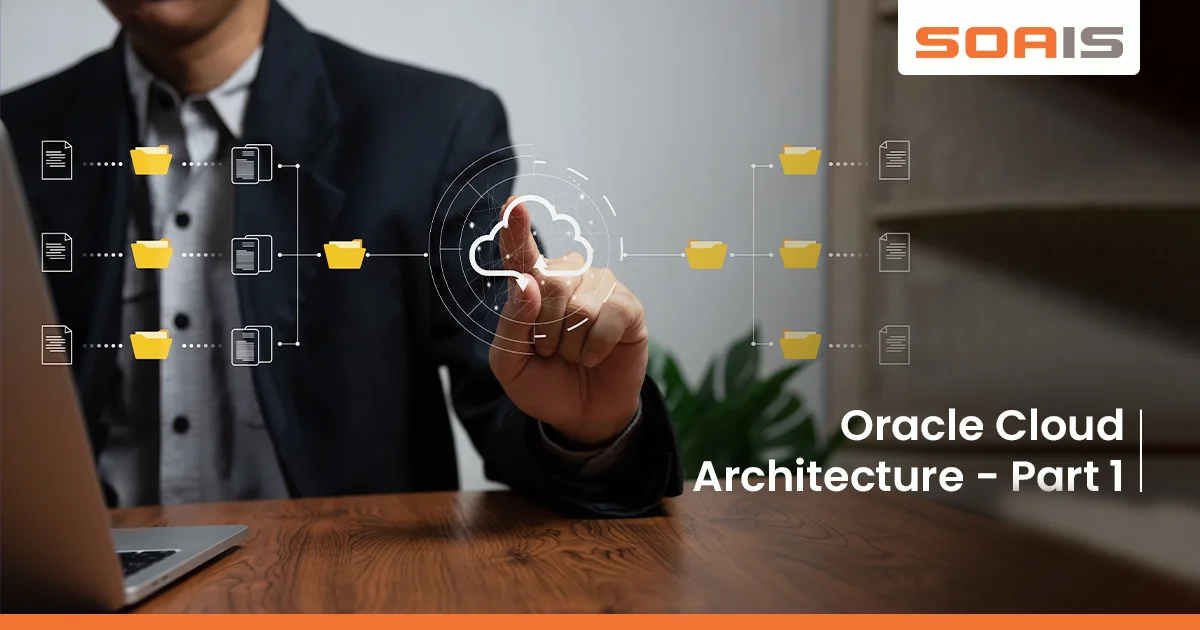

Oracle Cloud Architecture

- Regions → It is a localized geographic area comprising one or more availability domains.
- Lowest latency and Highest Performance.
- Availability Domains → An availability domain consists of a set of data centres within an Oracle Cloud Infrastructure region. The availability domains within a region are interconnected via a low-latency and high-bandwidth network.
- Fault Domain → Fault domain is grouping hardware and infrastructure within an availability domain to provide anti-affinity.
- Bucket
A bucket is a container for storing objects in a compartment within a namespace. It is associated with a single compartment.
- Sandbox
In Sandbox, Users can modify and analyzing data privately. The user’s data is saved independently of the application’s data.
- Tenancy
A tenancy is a secure and isolated partition of Oracle Cloud Infrastructure to create, organize, and administer your cloud resources.
TENANCY SETUP

- TENANCY ADMIN →
- Creates and account.
- Responsible for day-to-day operations.
- OCI ADMIN → set of users.
- OCI ADMIN GROUP → OCI admin here
- POLICIES → admin policy.
- SANDBOX – COMPARTMENT → own specific compartment.
- Best Practice:-
- Don’t use the Tenancy Administrator Account for day-to-day operations.
- Created a dedicated compartment to isolate resources.
- Enforce the use of Multi-Factor Authentication. Eg Password and Device.
OCI ADMIN POLICIES
- Manage domains.
- Manage all – resources.
Difference between Security List and Network Security Group.
⇰ NSGs’ security rules apply only to the resources in that NSG. By contrast, Security Lists’ rules apply to all the resources in a subnet that uses the list.
- What is a load balancer?
⇰ It provides automated traffic distribution from one entry point to multiple servers in a VCN.


- ORACLE CLOUD SHELL => Oracle Cloud Infrastructure (OCI) Cloud Shell is a web browser-based terminal accessible from the Oracle Cloud Console. Cloud Shell is free to use (within monthly tenancy limits) and provides access to a Linux shell.
- Scaling => Scaling are two types: Vertical Scaling and another one is Horizontal Scaling.
- Vertical Scaling, scale–up and scale–down instance shape supported. The new shape must have the same hardware architecture. Downtime is required. Stop the Instance before resizing.
- Horizontal Scaling enables large-scale deployment of VM. Scale–out and Scale –in. One VM fails others keep working. No extra cost for using auto-scaling.
Kubernetes – It’s helpful for orchestration.
- Can run containerized applications of any scale without any downtime.
- Can self-heal cauterized application.
- Greatly simplifies deployment operations.
Docker – It is used to manage and build the container.
Autonomous Database => An autonomous database is a cloud database that uses machine learning to automate database tuning, security, backups, updates, and other routine management tasks traditionally performed by DBAs.
Object Storage Tiers =>



